Nitric oxide acts as a cotransmitter in a subset of dopaminergic neurons to diversify memory dynamics
- PMID: 31724947
- PMCID: PMC6948953
- DOI: 10.7554/eLife.49257
Nitric oxide acts as a cotransmitter in a subset of dopaminergic neurons to diversify memory dynamics
Erratum in
-
Correction: Nitric oxide acts as a cotransmitter in a subset of dopaminergic neurons to diversify memory dynamics.Elife. 2020 Oct 22;9:e64094. doi: 10.7554/eLife.64094. Elife. 2020. PMID: 33090093 Free PMC article.
Abstract
Animals employ diverse learning rules and synaptic plasticity dynamics to record temporal and statistical information about the world. However, the molecular mechanisms underlying this diversity are poorly understood. The anatomically defined compartments of the insect mushroom body function as parallel units of associative learning, with different learning rates, memory decay dynamics and flexibility (Aso and Rubin, 2016). Here, we show that nitric oxide (NO) acts as a neurotransmitter in a subset of dopaminergic neurons in Drosophila. NO's effects develop more slowly than those of dopamine and depend on soluble guanylate cyclase in postsynaptic Kenyon cells. NO acts antagonistically to dopamine; it shortens memory retention and facilitates the rapid updating of memories. The interplay of NO and dopamine enables memories stored in local domains along Kenyon cell axons to be specialized for predicting the value of odors based only on recent events. Our results provide key mechanistic insights into how diverse memory dynamics are established in parallel memory systems.
Keywords: D. melanogaster; associative learning; cotransmitter; dopamine; memory dynamics; mushroom body; neuroscience; nitric oxide.
© 2019, Aso et al.
Conflict of interest statement
YA, RR, XL, DB, KC, TN, BS, CC, AH, AL, PT, JH, AL, GR No competing interests declared
Figures
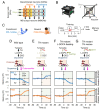
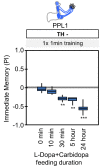








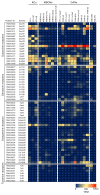




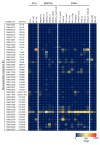








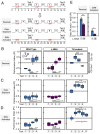

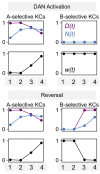


Comment in
-
How nitric oxide helps update memories.Elife. 2020 Jan 8;9:e53832. doi: 10.7554/eLife.53832. Elife. 2020. PMID: 31913122 Free PMC article.
References
-
- Abrams TW, Yovell Y, Onyike CU, Cohen JE, Jarrard HE. Analysis of sequence-dependent interactions between transient calcium and transmitter stimuli in activating adenylyl cyclase in Aplysia: possible contribution to CS--US sequence requirement during conditioning. Learning & Memory. 1998;4:496–509. doi: 10.1101/lm.4.6.496. - DOI - PubMed
-
- Amit DJ, Fusi S. Learning in neural networks with material synapses. Neural Computation. 1994;6:957–982. doi: 10.1162/neco.1994.6.5.957. - DOI
Publication types
MeSH terms
Substances
Associated data
- Actions
Grants and funding
LinkOut - more resources
Full Text Sources
Medical
Molecular Biology Databases

